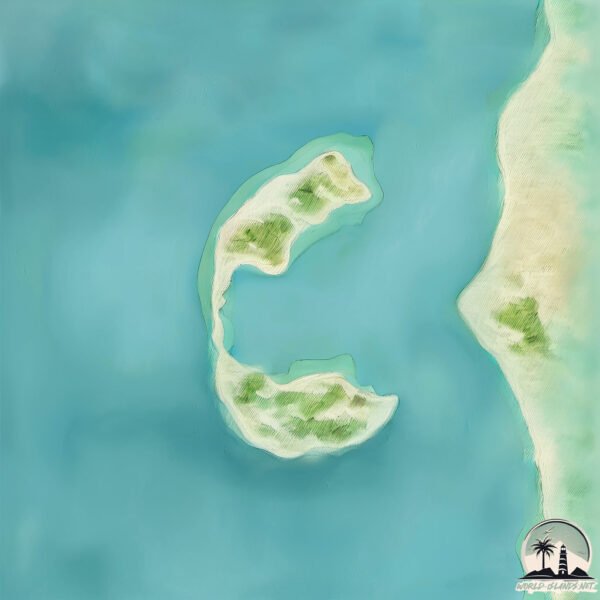Welcome to Crab , a Temperate island in the North Atlantic Ocean, part of the majestic Atlantic Ocean. This guide offers a comprehensive overview of what makes Crab unique – from its geography and climate to its population, infrastructure, and beyond. Dive into the details:
Geography and size of Crab
Size: 1.811 km²Coastline: 9.7 kmOcean: Atlantic OceanSea: North Atlantic OceanContinent: North America
Crab is a Small Island spanning 1.8 km² with a coastline of 9.7 km.
Archipel: –
Tectonic Plate: North America – Covers North America and parts of the Atlantic and Arctic Oceans, characterized by diverse geological features and varying levels of seismic activity.
The geographic heart of the island is pinpointed at these coordinates:
Climate and weather of Crab
Climate Zone: TemperateClimate Details: Humid Subtropical ClimateTemperature: Hot Summer
Climate Characteristics: With continuous rainfall and hot summers, this climate is common in some coastal regions, supporting diverse vegetation.
Topography and nature of Crab
Timezone: UTC-04:00Timezone places: America/La_PazMax. Elevation: 25 m Mean Elevation: 4 mVegetation: Evergreen Needleleaf ForestTree Coverage: 65%
The mean elevation is 4 m. The highest elevation on the island reaches approximately 25 meters above sea level. The island is characterized by Plains: Flat, low-lying lands characterized by a maximum elevation of up to 200 meters. On islands, plains are typically coastal lowlands or central flat areas.
Dominating Vegetation: Evergreen Needleleaf Forest
Vegetation: 5 vegetation zones – Highly Diverse Island
Infrastructure and Travelling to Crab
Does the island have a public airport? no .
Does the island have a major port? no .
The mean population of Crab is 0 per km². Crab is Uninhabited. The island belongs to Canada .
Continuing your journey, Jekyll is the next notable island, situated merely km away.
Crab Island in Destin, Florida
Welcome to the beautiful Crab Island! If you've ever made the trip to the Emerald Coast, Destin specifically, there's a great chance ...
Crab Island in Destin, Florida
Welcome to the beautiful Crab Island! If you've ever made the trip to ...
Welcome to the beautiful Crab Island! If you've ever made the trip to the Emerald Coast, Destin specifically, there's a great chance ...
100 Million Red Crabs On A Tropical Island - Biggest Crab Migration In The World
The biggest crab migration in the world happens only on this remote ...
The biggest crab migration in the world happens only on this remote tropical island! Over 100 million crabs will make the shore ...
Surviving On Giant Crab Island Using A Hand Spear
Surviving on whatever I can catch as we search for the world's largest ...
Surviving on whatever I can catch as we search for the world's largest land crab which takes us on a wild adventure through this ...
Canada is classified as Developed region: G7: Group of Seven – Major advanced economies, including Canada, France, Germany, Italy, Japan, the United Kingdom, and the United States. The level of income is High income: OECD.
News – Latest Updates and Headlines from Crab
Stay informed with the most recent news and important headlines from Crab. Here’s a roundup of the latest developments.
Loading...
Please note: The data used here has been primarily extracted from satellite readings. Deviations from exact values may occur, particularly regarding the height of elevations and population density. Land area and coastline measurements refer to average values at mean high tide.

